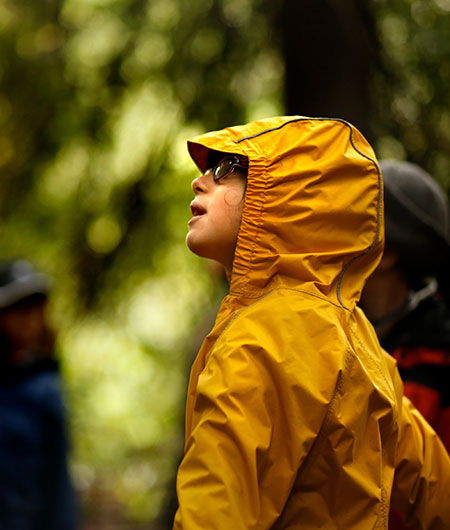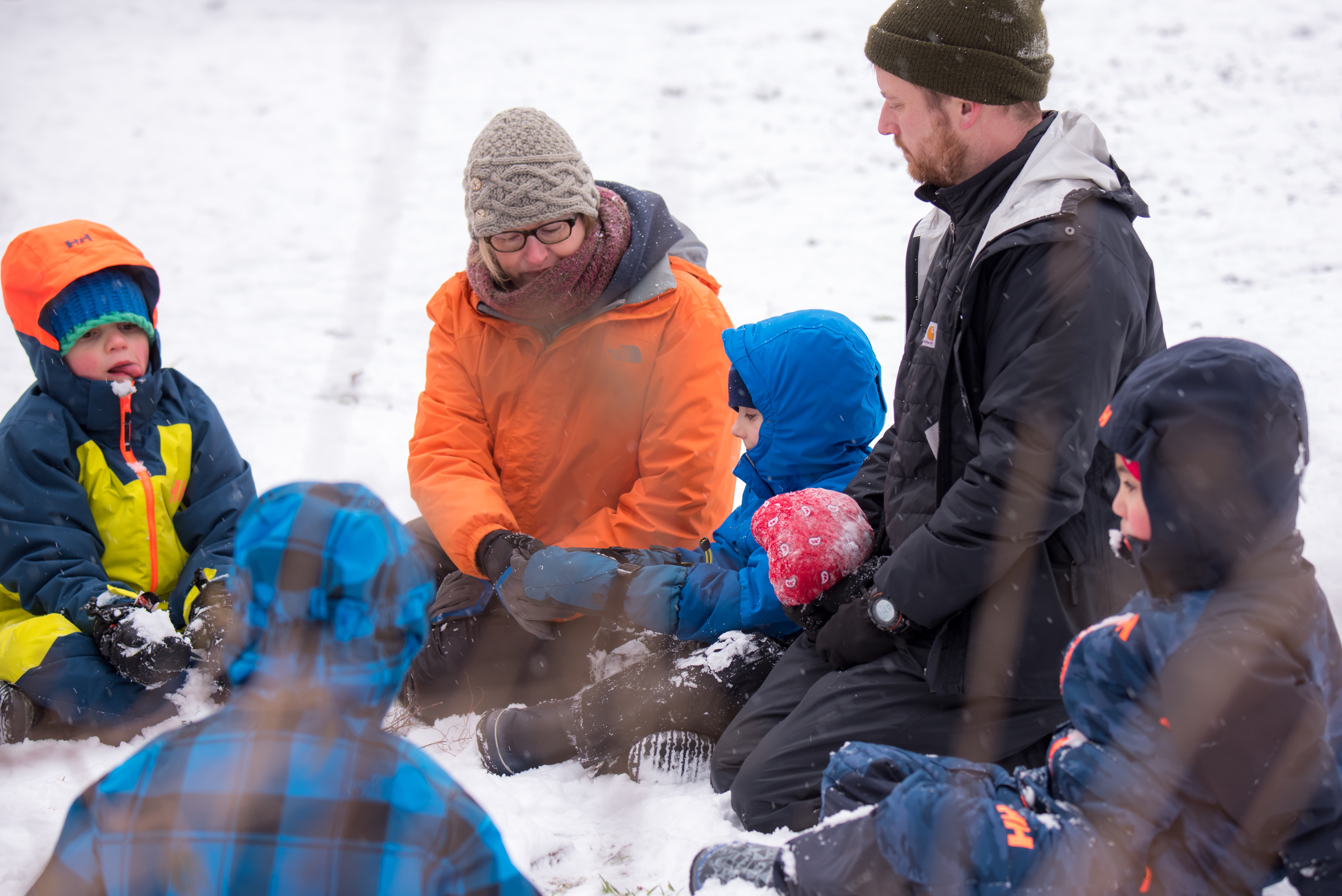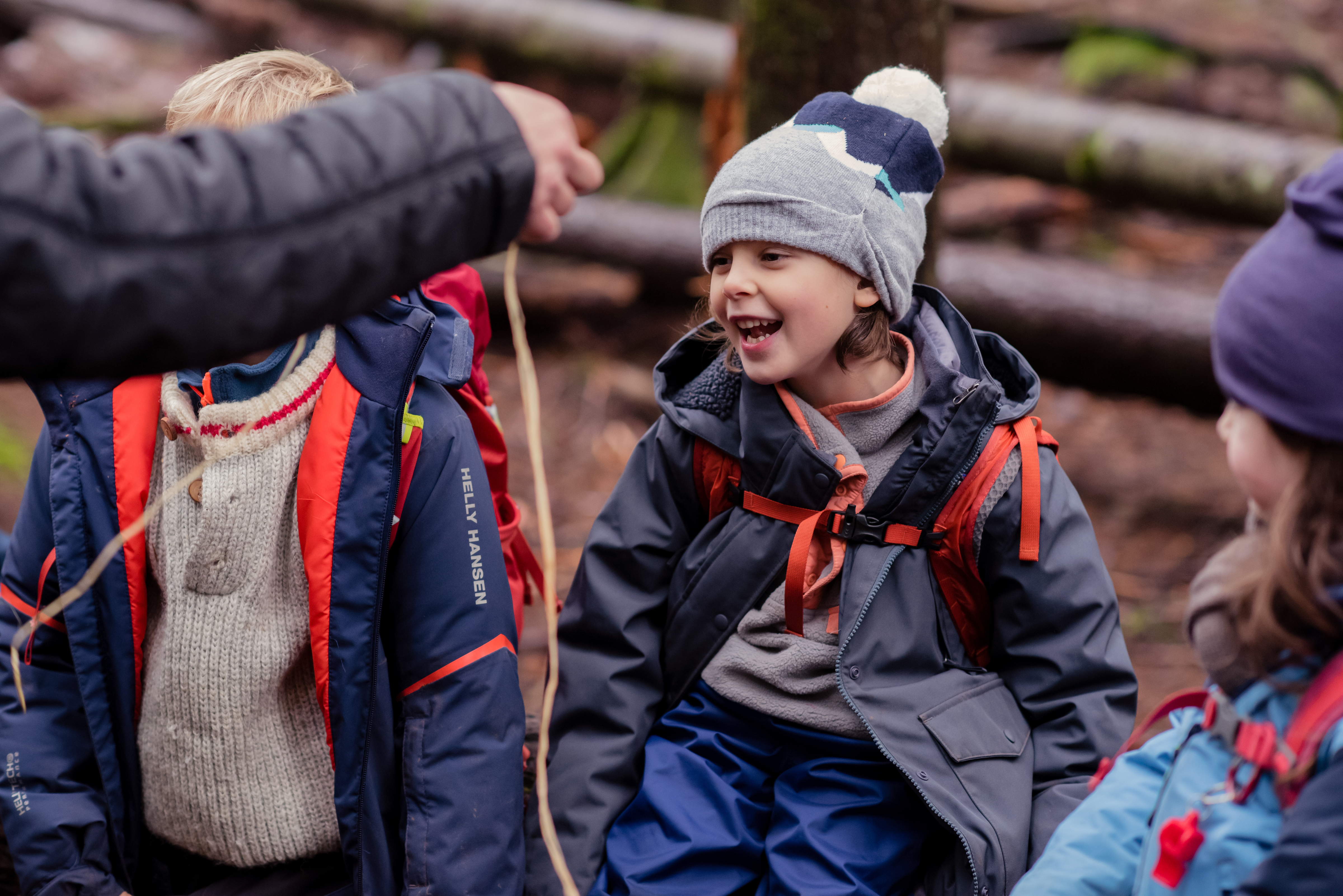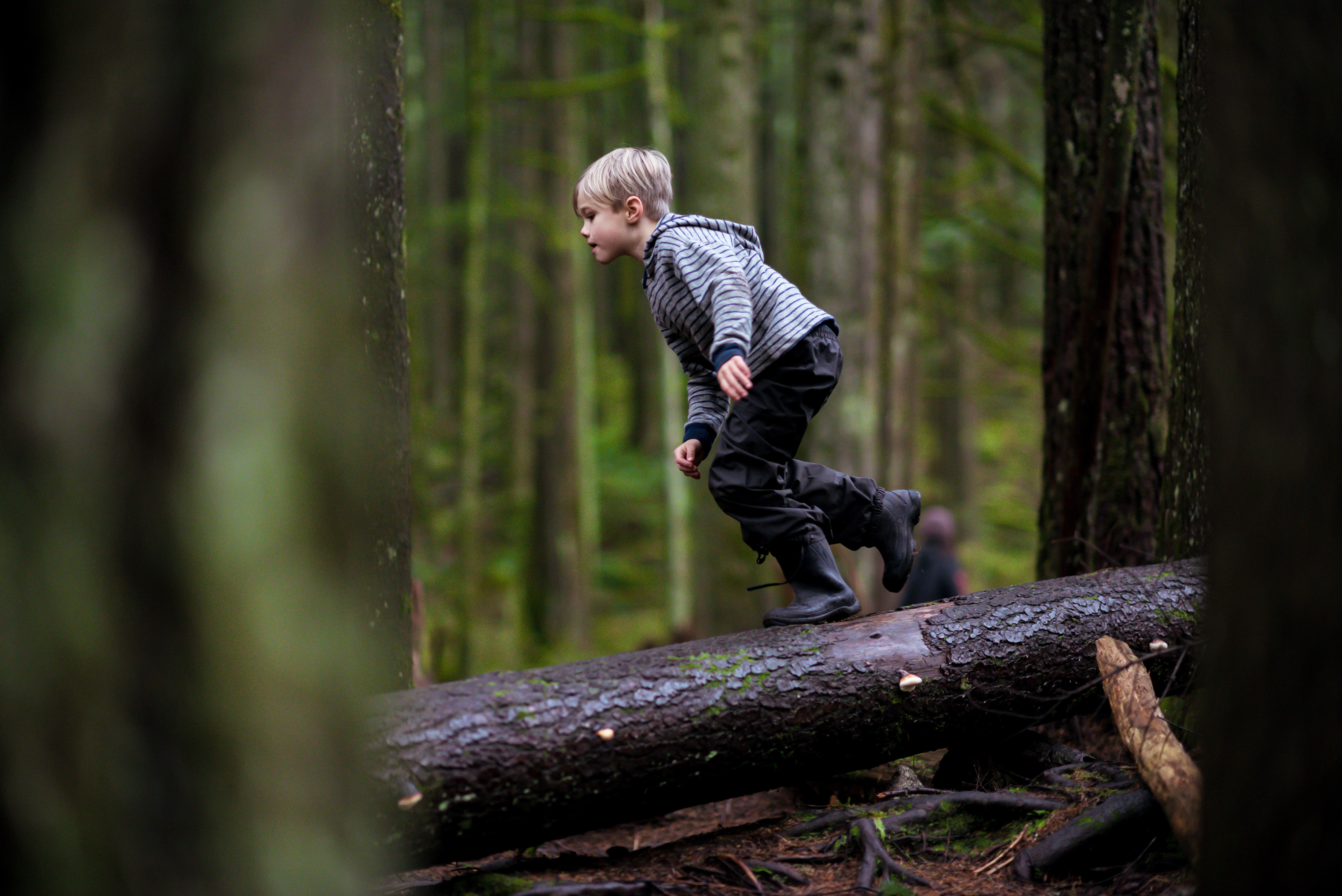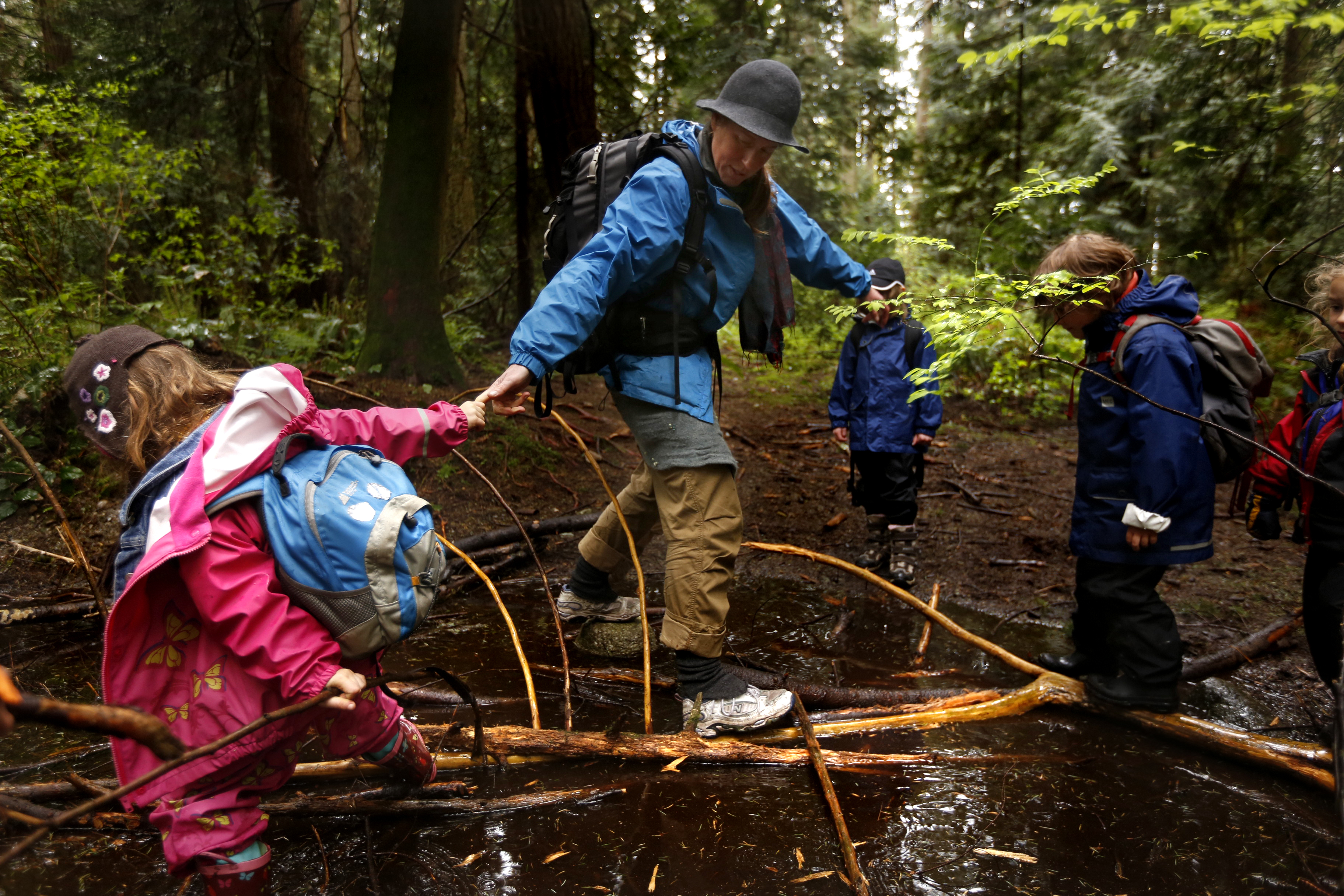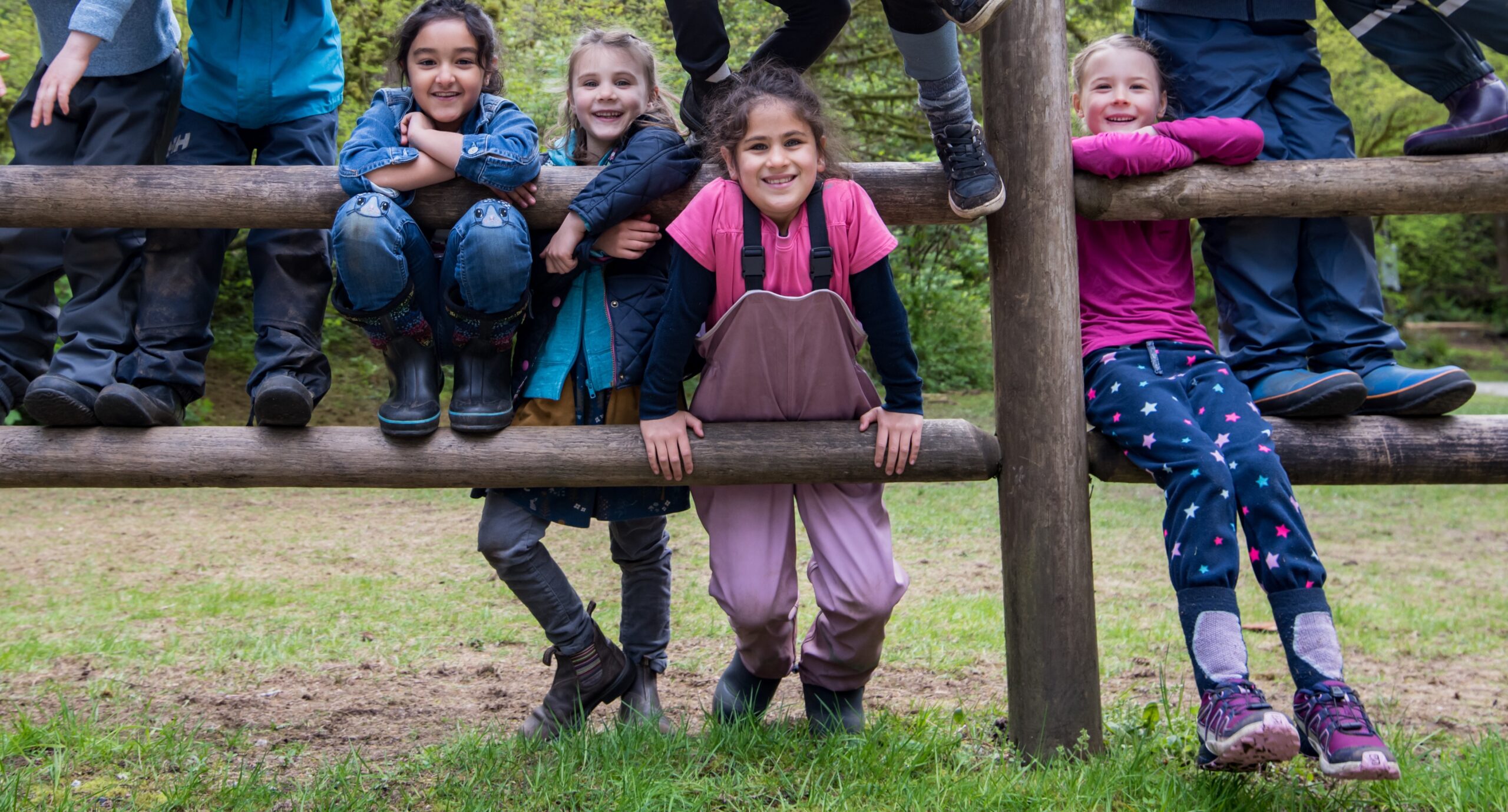Preparing for Nature School

Getting quality gear is just one of the many commitments for nature school, and if getting the essentials listed below is not accessible for you, please let us know. We will find a way to get the items you need so that your child can still come to program and fully enjoy themselves since we are aware that without these essentials, children have a harder time in the forest, and we don’t want anyone to be uncomfortable, or potentially in danger on wet and rainy days.
Required Gear and Clothing:
1. Backpack (packed on the light side) and a rain cover
We recommend backpacks with carrying volumes of 18 L minimum. Children older than nine may require larger packs. Not many youth backpacks have hip straps, but they provide the most comfort by distributing the backpack’s weight off the shoulders. At the very least, they should have a sternum strap. They should be packed as light as possible while carrying the necessities and should have a pack rain cover attached. On cold, rainy days, we recommend lining the backpack with a garbage bag to keep the contents dry and putting additional layers into dry bags or zip locks.
Recommendations:
- Backpacks with carrying volumes of 18 L minimum, like Deuter’s Junior Daypack. Children older than nine may require larger packs.
- Rain pack cover
- Dry bag or ziplock filled with additional layers
2. Snack, lunch, and water
Healthy options are great, rather than sugary foods. A thermos with a warm meal, soup, or tea helps keep the body warm from the inside out!
Recommendations:
- Thermos
- 1 L water bottle (500 mL is ok for Young Sprouts)
3. Underlayers/baselayers for top and bottom
An underlayer closest to the skin should be made of wool or polypro (no cotton) to provide warmth and wick away moisture. As long as your child is not allergic, nothing beats wool. A couple of layers of wool next to the skin in varying weights is better than fleece because wool is still warm even if it gets wet.
Recommendations from Helly Hansen:
- Junior under layer: Lifa Merino Set, Merino Mid Set, Lifa Active Set, Lifa Set
- Kids under layer: Lifa Merino Set, Merino Mid Set
4. Mid-layers, including wool, fleece, and insulated jackets
Midlayers on top and bottom can be added or removed based on the conditions and activity to provide additional warmth and insulation. Wool mid-layers are fantastic and can be found at second-hand stores if they aren’t already owned.
Recommendations from Helly Hansen:
- Junior middle layer: Liftaloft Insulated Jacket, Barrier Down Insulator
- Kids middle layer: Daybreaker 2.0 Jacket, Daybreaker Fleece Pant, Chill FZ Hoodie, Barrier Down Insulator, Reversible Pile Jacket
5. Raingear, including waterproof pants and jacket
A high-quality waterproof jacket and pants is the final, most essential layer. Once an outer layer gets soaked through, there is no protection for the rest of the day. If this starts to occur, a re-waterproofing wash may extend the item’s life.
Recommendations from Helly Hansen:
- Junior rain jackets: Seven J Jacket, Moss Jacket, Crew Midlayer Jacket, Ascent Jacket
- Junior rain pants: Moss Pant, Dubliner Pant
- Kids rain jackets: Shelter Jacket, Norse Jacket
- Kids rain pants: Shelter Pants
- Kids rain sets: Moss PU Rainset, Bergen PU Rain set
6. Waterproof boots or shoes and warm socks
We recommend insulated boots such as BOGS or Kavik since regular rain boots don’t insulate and can make feet cold quickly. For any underlayer, including socks, nothing beats wool, and nothing is worse than cotton.
Recommendations:
- Bogs or Kavik Insulated Rubber Boots
- Wool socks
7. Gloves, warm hat, and extras of both
Cold hands are the worst, and it’s avoidable! Ski gloves aren’t waterproof, and most gloves will get wet and never dry out during the day. Puddlegear makes insulated and waterproof mittens that have been the most effective. Packing several gloves, extra wool socks to put on hands, and hand warmers are recommended. Warm hats are necessary since rain hoods rarely stay on all day!
Recommendations:
- Puddlegear Rain Mittens (SENS families get discounts)
- Handwarmers; the rechargeable USB, reusable or disposable varieties are all effective.
8. Extra clothing in ziplock bags
It’s worth saying again that layers make a huge difference if someone is cold or wet. Extra gloves, socks, and a mid-layer are essentials, and anything else in addition to that is even better!
Although being prepared with the right gear and clothing can make all the difference, we also recommend checking in with your child about how to layer themselves to stay warm, what increases body heat (playing games, doing warm-up activities), and what doesn’t (playing in puddles early in the day, playing in the rain without gloves), so they are able to manage themselves and feel knowledgeable and capable.
